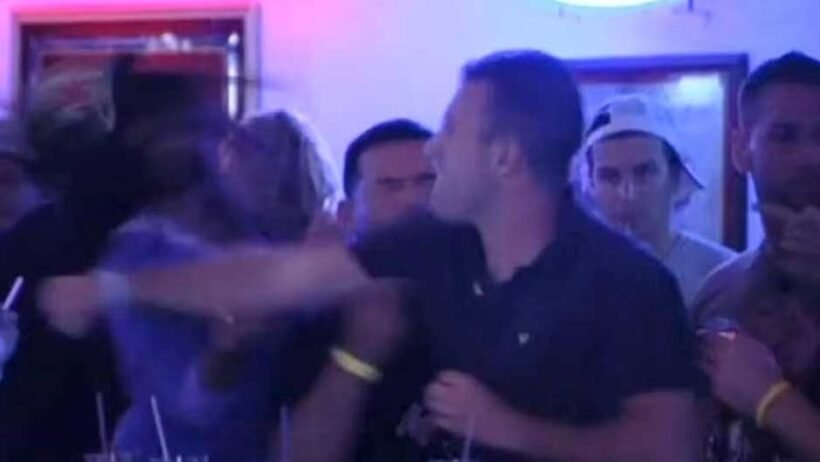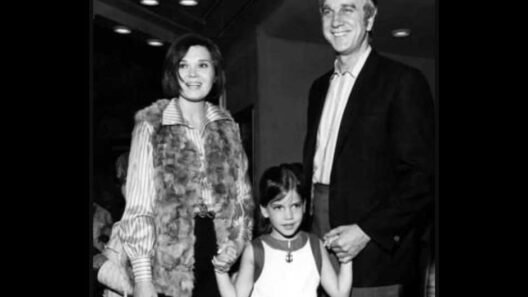Reality TV has given us countless memorable moments, but few have had consequences as severe as what happened to Brad Ferro. Back in 2009, this 24-year-old gym teacher became part of television history for all the wrong reasons. His encounter with Nicole “Snooki” Polizzi during MTV’s Jersey Shore filming didn’t just make headlines – it completely destroyed his life.
Most people remember the punch. What they don’t know is the story of the man behind it. Brad Ferro wasn’t some troublemaker or celebrity seeking attention. He was a dedicated educator who worked with at-risk kids in Queens, trying to make a real difference in their lives.
That one night in August changed everything. The seconds of footage that went viral cost him his career, his reputation, and nearly everything he’d worked for. This is what really happened to Brad Ferro, and where he might be today.
Who is Brad Ferro? The Man Behind the Headlines
Long before he became known for that infamous Jersey Shore moment, Brad Ferro was just another young teacher trying to build a career. Growing up on Long Island, he seemed to have his life on track. Fresh out of college with a degree in hand, he landed a job at North Queens Community High School teaching physical education.
This wasn’t just any teaching job, though. Ferro worked with some of the toughest kids in the NYC school system – students who’d been written off by other educators. His colleagues respected him for his patience and genuine care for these troubled teens. He used sports and fitness as tools to reach kids who struggled in traditional classroom settings.
People who knew Brad before the incident paint a picture of someone with solid values. He’d never been in trouble with the law, not even a minor offense. Friends and family described him as respectful, especially toward women – something his upbringing had emphasized strongly.
At 24, Brad was living the typical young professional life. He had student loans to pay off, lived with family in Deer Park, and enjoyed hanging out with college buddies on weekends. Teaching wasn’t making him rich, but he found the work meaningful. Working with at-risk youth felt like a calling, not just a job.
His father Dan would later tell reporters that Brad had always been a good kid who stayed out of trouble. The family took pride in his choice to work with difficult students, seeing it as noble work that required real dedication.
The Night That Changed Everything: The Jersey Shore Incident
August 19, 2009 started out like any other summer night. Brad had plans to meet up with an old college friend and a couple other guys for drinks down at the Jersey Shore. They picked the Beachcomber Bar & Grill in Seaside Heights – nothing fancy, just a typical shore bar that drew both locals and tourists.
What Brad didn’t realize was that MTV cameras were rolling that night. The Jersey Shore cast was there filming, and the whole place had that charged atmosphere that comes with reality TV production. The cameras were capturing everything, though Brad had no idea he was about to become part of the show.
By his own admission, Brad drank way too much that night. His memory of the evening became increasingly foggy as the alcohol took effect. Later, he’d describe his recollections as “fuzzy” – he remembered fragments but not the complete picture of what happened.
The trouble started when Snooki accused Brad and his friends of stealing drinks that belonged to her and the other cast members. What began as a verbal argument escalated quickly. In a moment that would be replayed millions of times online, Brad threw a punch that knocked Snooki to the floor.
MTV’s cameras caught the entire thing. The footage shows a brief but intense confrontation that ends with Snooki on the ground and other bar patrons restraining Brad. The whole incident lasted maybe ten seconds, but those seconds would define both their lives in completely different ways.
Police arrested Brad immediately. For someone who’d never even had a traffic ticket, getting handcuffed and taken to jail was a shock. He found himself facing assault charges and entering a legal system he’d never dealt with before.
The real wake-up call came later, during legal proceedings, when prosecutors showed him the video. Brad said he felt “sick to his stomach” watching himself on camera. He couldn’t believe he was capable of that kind of behavior. The disconnect between how he saw himself and what the video showed was devastating.
Legal Consequences and Public Apology
The legal system handled Brad’s case relatively quickly. He pleaded guilty to simple assault for the August 19 incident and received what most would consider a light sentence: a $500 fine and six months probation. The judge likely took into account his clean record and obvious remorse.
Part of his sentence included mandatory anger management classes. These sessions forced Brad to examine not just what he’d done that night, but why it happened. The classes became a period of serious self-reflection during what was already an incredibly difficult time in his life.
More challenging than the legal consequences was Brad’s decision to apologize publicly. Working with his attorney Andrew Siben, he spoke directly to media outlets about his regret. The apology seemed genuine and comprehensive, addressing both Snooki and the broader public who’d seen the footage.
“When I saw the video, I was sick to my stomach,” Brad told reporters. “I couldn’t believe that I’d ever do anything like that. I was raised to act in a respectful manner to women.” You could hear the genuine shock in his words – he really couldn’t reconcile his actions with his self-image.
He specifically addressed Snooki in his apology: “I’m very sorry for what happened. I deeply regret what happened. Nobody deserves that. That was not the real Brad Ferro.” This distinction between his actions and his character would become important as he tried to rebuild his reputation.
His lawyer advocated strongly for him, emphasizing that this was completely out of character. “I think Brad should be given a second chance to show he is a person of much higher character than has been shown on this video,” Siben argued. “I think he’s a decent young man who, unfortunately, made a bad decision which has come back to haunt him.”
The legal resolution was relatively painless compared to what came next. While the courts were willing to give him a second chance, the rest of society wasn’t so forgiving.
The Aftermath: Career and Personal Struggles
Losing his teaching job was swift and brutal. Once the Jersey Shore episode aired in December 2009, the NYC Department of Education moved fast to distance itself from the controversy. Brad was initially placed in what teachers call the “rubber room” – basically administrative limbo for educators under investigation.
The suspension quickly became permanent termination. The Department decided that Brad’s actions were incompatible with his role as an educator, especially given that he worked with troubled kids who looked up to him. The irony was painful – Brad had actually used his experience as a teaching moment, warning students about the dangers of drinking too much.
But losing the job was just the beginning of his employment problems. The incident had gone viral, which meant any potential employer could find the footage with a simple Google search. His name was now permanently linked to the controversy, making it nearly impossible to find work in education or anywhere else.
The financial impact hit immediately. Brad had college loans and living expenses, but his income disappeared overnight. Things got so bad that he eventually had to move in with his grandmother when his unemployment benefits ran out. For a young man trying to establish independence, this felt like complete failure.
The social consequences were just as devastating. Brad and his family became pariahs in their Deer Park community. Simple things like going to local restaurants became uncomfortable experiences. “We all had a hard time,” his father Dan later recalled, his voice breaking. “We couldn’t even go to the diner.”
Perhaps most personally crushing was how the incident affected Brad’s dating life. He worried constantly about how any potential romantic partner would react when they inevitably discovered his past. “That was one of the first things he said,” his father remembered. “‘What kind of woman is gonna want to have anything to do with me?’ I mean, you go on a couple of dates and then pump ‘Brad Ferro’ into Google…”
The psychological toll was obvious. According to his father, Brad became much less social after the incident, withdrawing from activities he’d previously enjoyed. The confident young teacher had been replaced by someone who was hesitant to engage with the world around him.
Media Impact and Public Perception
The way MTV and the broader media handled the Brad Ferro incident reveals a lot about reality TV and viral content in the digital age. Initially, MTV blurred Brad’s face in the footage, giving him some protection. But that anonymity didn’t last long, and his identity eventually became public knowledge.
The contrast between how the incident affected the two main participants couldn’t have been more dramatic. While Brad’s life fell apart, Snooki’s career actually benefited from the controversy. The incident didn’t hurt her – it made her more famous and more valuable.
After the episode aired, Snooki’s appearance fees jumped from $2,000 to $10,000 per event. Her Jersey Shore salary reached $30,000 per episode, making her one of the highest-paid reality stars of that era. She parlayed her increased fame into multiple income streams, including a New York Times bestselling novel called “A Shore Thing” and magazine covers like Rolling Stone.
The media often treated the incident as entertainment rather than examining its human cost. The footage became a viral sensation, shared endlessly on social media and discussed on talk shows. It was frequently replayed without any context about the lasting consequences for the people involved, especially Brad.
MTV eventually removed the footage from the actual episode broadcast, showing some recognition that the content was problematic. But by then, the clip had already spread across the internet, making the gesture mostly symbolic. The damage to Brad’s reputation was already done.
The incident highlighted the power imbalance in reality TV production. While cast members like Snooki had contracts and legal protections, ordinary people who appeared in footage often had no recourse when their lives were affected by the broadcast. Brad’s father expressed this frustration directly: “My son made them famous. They made a lot of money off of him, and I think they owe him.”
Public reaction was mixed but generally unsympathetic to Brad. Many viewers focused solely on the violence of his actions without considering the broader context – the alcohol, the pressure of being filmed, or the long-term consequences he faced. This lack of nuance in public discourse made his situation even harder.
Years later, Snooki acknowledged the incident’s impact during a 2013 appearance on “Oprah: Where Are They Now,” calling it “scary.” But she also praised MTV’s decision to air the footage, arguing that “it should be out there. Everyone should know that it can happen.” Her perspective showed how differently the two participants viewed the incident’s legacy.
A New Path: Military Service Decision
By 2011, nearly two years after the incident, Brad had run out of conventional options for rebuilding his career. His criminal record, combined with widespread name recognition and viral footage, created seemingly impossible barriers to traditional employment. Faced with limited alternatives, he made the difficult decision to join the U.S. Army.
Enlisting represented both a practical solution and a symbolic fresh start. Military service offered steady employment, a structured environment, and the chance to serve his country meaningfully. It also provided an opportunity to prove his character through actions rather than words.
Brad’s military job was Cavalry Scout, placing him among the Army’s reconnaissance specialists. These soldiers are typically first into hostile territory, gathering intelligence and conducting surveillance. The demanding nature of this role showed Brad’s desire to take on real responsibility and prove his worth through service.
His father had mixed feelings about the enlistment. While proud of his son’s decision to serve, Dan worried about the challenges Brad might face if fellow soldiers recognized him. Media reports noted that “his father hopes that no one on base recognizes his son,” highlighting ongoing concerns about his past following him even into military service.
The decision to enlist wasn’t made lightly. Brad had to overcome the obstacle of his misdemeanor conviction, though military recruitment standards had been adjusted in recent years to allow such cases. Since 2007, the U.S. military had been accepting recruits with various criminal backgrounds to meet recruitment goals, making Brad’s enlistment possible despite his record.
Basic training at Fort Knox, Kentucky, represented a complete departure from his previous life. The structured military environment, with its emphasis on discipline, teamwork, and personal accountability, provided a framework for personal growth and redemption that had been missing in his civilian struggles.
For Brad’s family, his enlistment represented hope for a new beginning. His father expressed optimism about his son’s future: “He lost his career and his pride and everything else, but he’s getting it back. You can’t keep a good man down for too long.” This reflected the family’s belief that military service could provide the second chance that civilian society had denied him.
The military’s culture of focusing on present performance rather than past mistakes offered Brad something he couldn’t find elsewhere: the opportunity to be judged by his current actions rather than his worst moment. This environment was crucial for someone whose civilian identity had become inseparable from a single incident.
Lessons Learned: The Long-term Impact of Viral Moments
Brad Ferro’s story offers important lessons about how viral moments can fundamentally change lives in the digital age. His experience shows the permanence of internet content and how difficult it can be to move beyond a single moment of poor judgment when that moment becomes part of the permanent digital record.
One of the biggest takeaways is how disproportionate consequences can be in the social media era. A few seconds of footage from a night of bad decision-making resulted in years of unemployment, social isolation, and personal struggle. This raises serious questions about justice, redemption, and second chances in modern society.
The incident also shows how vulnerable ordinary people are when they get caught up in reality TV and viral content. Unlike celebrities who have publicists, legal teams, and crisis management professionals, regular people like Brad often lack the resources to manage the fallout from unwanted fame. The power imbalance between media companies and ordinary people becomes stark in cases like this.
Brad’s story demonstrates how quickly professional reputation can be destroyed today. His years of dedicated service as an educator were overshadowed by seconds of poor behavior, showing how digital permanence makes traditional concepts of rehabilitation and second chances much harder to achieve. The ease with which employers can research potential hires means past mistakes follow people far longer than they might have in previous generations.
The psychological impact of viral notoriety represents another crucial lesson. Brad’s withdrawal from social activities and concerns about dating show how public shame can affect every aspect of personal life. Knowing that your worst moment is permanently accessible to anyone with internet access creates a unique form of psychological burden.
The incident also raises complex questions about alcohol and personal responsibility. While Brad’s intoxication doesn’t excuse his actions, it raises questions about how society should balance accountability with understanding of impaired judgment. His use of the experience as a teaching tool for students before losing his job suggests the incident could have served educational purposes if handled differently.
The contrast between Brad’s and Snooki’s post-incident paths shows how the same event can have vastly different consequences for different participants. While Snooki leveraged the incident into increased fame and financial success, Brad faced career destruction and social exile. This disparity reflects broader inequalities in how society treats different types of people involved in controversial incidents.
Where is Brad Ferro Now? Current Status and Future
More than a decade has passed since that August night in 2009 changed Brad Ferro’s life forever. The last confirmed information about his whereabouts dates to 2011, when he enlisted in the Army and began basic training at Fort Knox. Since then, he’s largely disappeared from public view – which may be exactly what he wanted.
The absence of recent information about Brad suggests he may have successfully achieved what eluded him in civilian life: the ability to move forward without constant reference to his past. Military service, with its emphasis on present performance and future potential, may have provided the fresh start he desperately needed.
Online discussions and social media occasionally speculate about Brad’s current status, with some users claiming to have information about his post-military life. However, these claims remain unverified, and it appears Brad has chosen to maintain a low profile, avoiding the public attention that caused him so much trouble.
The lack of recent media coverage or public appearances suggests Brad may have learned one of the most important lessons from his experience: the value of privacy and staying out of the public eye. His silence contrasts sharply with the media-savvy approach taken by many reality TV personalities who try to extend their fame.
For those who knew Brad before the incident, his current anonymity may represent a form of success. His father’s hope that “no one on base recognizes his son” appears to have been fulfilled, at least in terms of avoiding further media attention. The ability to serve without constant reference to his past may have provided the dignity and purpose that civilian life had denied him.
Whether Brad has been able to rebuild personal relationships, pursue romantic interests, or establish a stable career remains unknown. These private matters, which were so deeply affected by his public notoriety, may have found resolution away from media scrutiny. The absence of information could indicate successful rehabilitation and reintegration into society.
From a broader perspective, Brad’s story continues to serve as a cautionary tale about the permanence of digital content and the challenges of redemption in the internet age. His experience remains relevant as new generations navigate social media and the potential for viral moments to define their lives.
The ongoing interest in Brad’s story, shown by periodic social media discussions and articles revisiting the incident, demonstrates how certain viral moments become part of cultural memory. His case is frequently cited in discussions about cancel culture, second chances, and the responsibilities of media companies toward ordinary people caught in their content.
Whether Brad has found peace, professional success, and personal happiness remains a mystery. Perhaps that uncertainty is itself a form of success – the ability to live a private life free from the constant scrutiny that defined his early adult years. In a world where privacy has become increasingly rare, Brad’s disappearance from public view may represent the ultimate victory over his viral past.
References
[1] New York Post. “Teacher who punched ‘Jersey Shore’ girl apologizes.” December 17, 2009. https://nypost.com/2009/12/17/teacher-who-punched-jersey-shore-girl-apologizes/
[2] HuffPost. “Brad Ferro, Snooki’s attacker in ‘Jersey Shore,’ to be fired by NYC Department of Education.” March 18, 2010. https://www.huffpost.com/entry/brad-ferro-snookis-attack_ws_420036
[3] New York Post. “Dejected ex-teacher who slugged Snooki joins Army.” March 6, 2011. https://nypost.com/2011/03/06/dejected-former-teacher-who-punched-snooki-joins-army/
[4] InTouch Weekly. “What Happened to the Guy Who Punched Snooki in the Face, Brad Ferro? Find Out What He’s Up to Today.” April 5, 2018. https://www.intouchweekly.com/posts/guy-punched-snooki-brad-ferro-127236/








